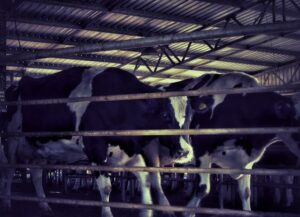Andrés Haro
The dairy industry was identified by FAO in 2006 as the agricultural production activity causing the world’s most pressing environmental problems, attributing to it the major cause of global warming and air pollution. In recent decades the dairy industry has made significant progress in the use of resources, animal nutrition and the management of dairy farms in order to contribute to the solution of these problems.
Agricultural activities have a significant environmental impact around the world, however, ignorance of the effects on livestock production can be attributed to confusing the consumer. From more recent data Capper et al. (2020) conducted an analysis of dairy cattle production and its environmental impact in the US. The authors used data based on production parameters obtained from the “Dairy Records Management Systems” between 2007 and 2017 (average number of cows: 1.96 and 2.19 million cows, respectively).
How to assess the environmental impact
To assess the environmental impact, the researchers used a deterministic model based on the productive parameters of dairy cattle populations. In addition, they used forage crops yields destined to livestock feeding, as well as the fertilizers and pesticides applied to the crops. The results of this analysis yielded the following results:
- The number of cows and animal yield factors increased during that decade. The number of cows increased by 10.5% and as a result milk, fat and milk protein production increased by 14%, 12% and 10%, respectively, resulting in an 18.3% increase in energy-corrected milk production. The environmental effects were mitigated, observing a 25% reduction in greenhouse gases (GHGs).
- While dairy cow numbers increased during that decade, the increased production was mainly due to greater productive efficiency in both feed and milk production. In addition, water usage in dairy production between 2007 and 2017 was reduced by 23%. The analysis showed that crops had less of an environmental impact (only 1% GHG) compared to the gains in dairy livestock productivity over those 10 years.
Conclusión
In conclusion, if the current US industry would produce the same amount of milk and yield like in 2007, the environmental impact would be greater than expected. However, modern dairy farmers can be more efficient at feeding more balanced diets than their predecessors, due to a significantly greater understanding of livestock metabolism and nutrition today. Technological, nutritional and management advances in the dairy industry have shown they minimize the environmental impact and increase milk production.
Reference
Capper, J.L., Cady, R.A. 2020. The effects of improved performance in the US dairy cattle industry on environmental impacts between 2007 and 2017. Journal of Animal Science. 98: 1–14.
© 2021 Dellait Knowledge Center. All Rights Reserved.












